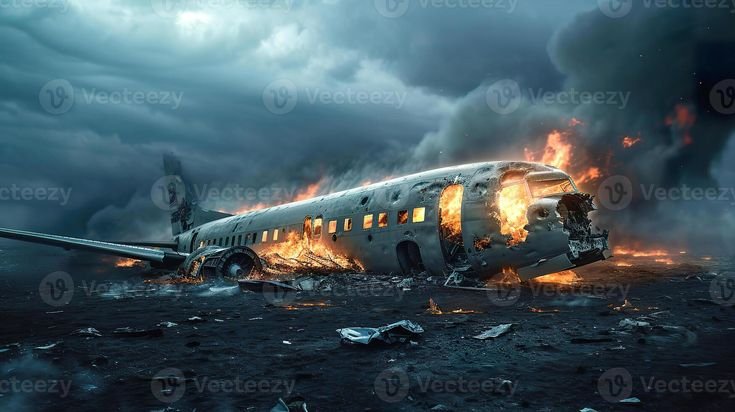Air India Flight AI 171 Crash: A National Tragedy Unfolds
On June 12, 2025, tragedy struck India’s aviation history when Air India Flight AI 171, a Boeing 787 Dreamliner, crashed shortly after takeoff from Sardar Vallabhbhai Patel International Airport in Ahmedabad. Bound for London Gatwick, the flight was carrying 230 passengers and 12 crew members. Moments after lifting off the runway, the aircraft lost altitude and crashed into a residential hostel building within the B.J. Medical College complex. The incident has resulted in one of the deadliest air disasters in recent memory, with a staggering death toll and an outpouring of grief nationwide.
The Final Moments of Flight AI 171
According to initial radar and communication data, Flight AI 171 took off at approximately 1:38 PM local time. Less than a minute after liftoff, the pilot made a distress call, indicating that the aircraft was experiencing thrust issues and was unable to gain proper altitude. Eyewitnesses on the ground and passengers on nearby flights reported seeing the aircraft flying unusually low, with one wing dipping and engines appearing strained before the crash.
Within seconds of the distress call, the aircraft plunged into a multi-story building within the medical college campus, erupting in a fiery explosion that was visible for miles. Emergency response teams rushed to the scene, but the intensity of the blaze and the structural collapse of the building complicated rescue efforts.
Casualties and Human Impact
The crash of Flight AI 171 resulted in an immense human toll. Of the 242 people onboard, 241 perished in the crash, including all 12 crew members. The sole survivor, a businessman seated near an emergency exit, miraculously escaped with non-life-threatening injuries. His account of surviving the impact and making his way through the wreckage is being hailed as nothing short of extraordinary.
On the ground, the situation was equally devastating. The aircraft struck a hostel building housing medical students, resulting in the deaths of at least 38 individuals who were inside or near the structure. Many others sustained injuries, ranging from burns to trauma from falling debris. Hospitals across Ahmedabad have been inundated with patients, and medical professionals are working tirelessly to treat survivors and conduct identification procedures for the deceased.
Technical Concerns and Investigation
In the aftermath of the crash, Indian aviation authorities launched an immediate investigation to determine the cause of the accident. Preliminary analysis suggests a critical failure during the initial climb. Investigators are focusing on several possible technical faults, including issues with the aircraft’s engines, flap deployment, and landing gear retraction. Early theories also point to a possible failure to achieve sufficient engine thrust at takeoff, compounded by high drag due to gear not retracting.
Flight data and cockpit voice recorders, commonly known as black boxes, were quickly recovered from the crash site. These devices are being analyzed by Indian investigators in collaboration with international agencies, including aircraft manufacturer Boeing and engine maker GE Aerospace. A comprehensive preliminary report is expected in the coming months, though full findings may take significantly longer.
Government and Airline Response
The Indian government has declared a national day of mourning to honor the victims of the crash. Prime Minister Narendra Modi personally visited the crash site and met with the families of the victims. In a public address, he expressed deep sorrow and assured citizens that every possible step would be taken to uncover the truth behind the tragedy and to prevent such an event from recurring.
Air India, now operated under the Tata Group, has pledged full cooperation with investigative bodies. The airline has also announced compensation for the families of the deceased and for the lone survivor. In addition to immediate financial aid, the airline is offering counseling services, assistance with identification, and logistical support for grieving families.
Boeing 787 Under Scrutiny
The Boeing 787 Dreamliner has been a cornerstone of Air India’s international fleet for years, known for its fuel efficiency, long-range capabilities, and safety record. The crash of Flight AI 171 marks the first fatal crash involving a Boeing 787 since its introduction. As such, the aviation community is paying close attention to the ongoing investigation, as the findings could have significant implications for airlines operating the same model.
Though Boeing has issued a statement expressing condolences and a commitment to assist investigators, the incident has triggered a reevaluation of maintenance protocols, pilot training, and aircraft systems across the industry. Aviation regulators in other countries are closely monitoring the situation, with some airlines conducting internal audits of their own 787 aircraft.
The Survivor’s Account
The lone survivor of the crash, a 40-year-old business executive en route to London for a conference, has shared his harrowing story. Seated near the emergency exit, he recounted hearing a loud bang shortly after takeoff and seeing smoke enter the cabin. The aircraft tilted sharply before crashing. In the chaos that followed, he managed to unfasten his seatbelt and find his way out through a ruptured section of the fuselage.
He suffered multiple injuries but is expected to make a full recovery. His survival is considered a miracle, and his testimony may provide crucial insights into what happened inside the aircraft during those final seconds.
Emergency Response and Recovery Efforts
Emergency crews responded to the crash site within minutes, though initial access was hindered by the fire and structural damage. Firefighters worked for hours to contain the blaze, while search and rescue teams began the grueling task of recovering bodies and identifying victims.
Forensic teams have been deployed to assist with DNA identification, and temporary morgues have been set up at nearby hospitals. Families from across India and overseas have begun arriving in Ahmedabad to claim the remains of their loved ones. Authorities have emphasized the sensitivity of this process and are coordinating efforts to ensure dignity and support throughout.
Public Reaction and Mourning
The news of the crash has sent shockwaves across India and the global Indian diaspora. Vigils have been held in cities across the country, with citizens lighting candles and offering prayers for the victims. Social media platforms are flooded with tributes, condolences, and calls for accountability.
Political leaders, celebrities, and community figures have all expressed grief over the incident. There has also been an outpouring of criticism over airline safety protocols and calls for more stringent oversight of aircraft maintenance and pilot preparedness.
Looking Ahead: Regulatory Changes and Industry Implications
In response to the crash, the Directorate General of Civil Aviation (DGCA) has ordered immediate inspections of all Boeing 787 aircraft in Indian fleets. While no other aircraft have been grounded, the directive calls for detailed checks on engine performance, landing gear systems, and cockpit control procedures.
The aviation industry is bracing for potential regulatory changes, including mandatory refresher training for pilots on handling emergency scenarios during takeoff and updates to automated system protocols. Industry experts predict that this incident could lead to an overhaul of maintenance standards and perhaps even software updates to the 787’s onboard systems.
Memorialization and National Reflection
Plans are underway to establish a permanent memorial at the crash site, which will serve as a place of remembrance for the victims. The government has promised to support bereaved families with long-term assistance, including educational scholarships for children of the deceased and employment support for surviving dependents.
As the nation mourns, there is a collective resolve to honor the lives lost by striving for higher safety standards in aviation. The tragedy has also sparked important conversations about emergency response infrastructure in densely populated areas near airports, as well as the need for better urban planning to minimize future risks.
Conclusion
The crash of Air India Flight AI 171 is a somber chapter in India’s aviation history. It has claimed the lives of over two hundred innocent people and left an indelible scar on the nation’s consciousness. While one man’s miraculous survival brings a ray of hope, the broader tragedy is a stark reminder of the importance of vigilance, maintenance, and preparedness in every aspect of air travel.
As investigations continue, families grieve, and the world watches closely. The loss will not be forgotten, and the lessons learned from this disaster may ultimately lead to stronger safeguards for future travelers.


